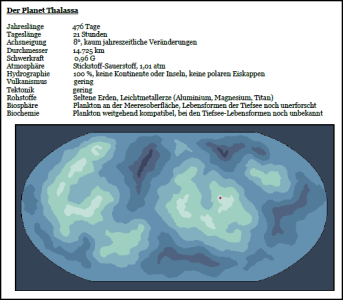The work on one of the scientific mysteries of my Thalassa
setting has led me to a point where I need a major natural
desaster, an extinction event able to wipe out almost 100 %
of all life forms at and near the ocean's surface, but with-
out such consequences for most of the deep sea life forms.
This looks more like some offworld event than like an event
on the planet itself, I think. It should be something which
leaves few material evidence (so no asteroid impact, which
would leave a crater), but there should be an at least small
probability that a similar event will happen again in the not
so far future.
There are a number of options, for example a strong gamma
ray flash (not very likely) or a massive solar flare (currently
my preferred version), perhaps also an extreme ice age cau-
sed by a variation in the star's luminosity or by the passage
of the entire system through an especially dense cloud of in-
terstellar dust.
If you can think of any other at least somewhat plausible de-
saster, please let me know, I would prefer to use something
I have not already used in any previous setting.
Thank you.
setting has led me to a point where I need a major natural
desaster, an extinction event able to wipe out almost 100 %
of all life forms at and near the ocean's surface, but with-
out such consequences for most of the deep sea life forms.
This looks more like some offworld event than like an event
on the planet itself, I think. It should be something which
leaves few material evidence (so no asteroid impact, which
would leave a crater), but there should be an at least small
probability that a similar event will happen again in the not
so far future.
There are a number of options, for example a strong gamma
ray flash (not very likely) or a massive solar flare (currently
my preferred version), perhaps also an extreme ice age cau-
sed by a variation in the star's luminosity or by the passage
of the entire system through an especially dense cloud of in-
terstellar dust.
If you can think of any other at least somewhat plausible de-
saster, please let me know, I would prefer to use something
I have not already used in any previous setting.
Thank you.
